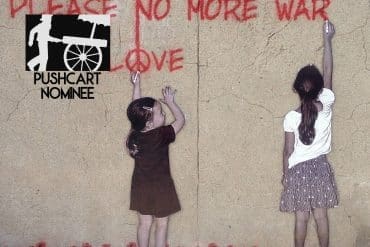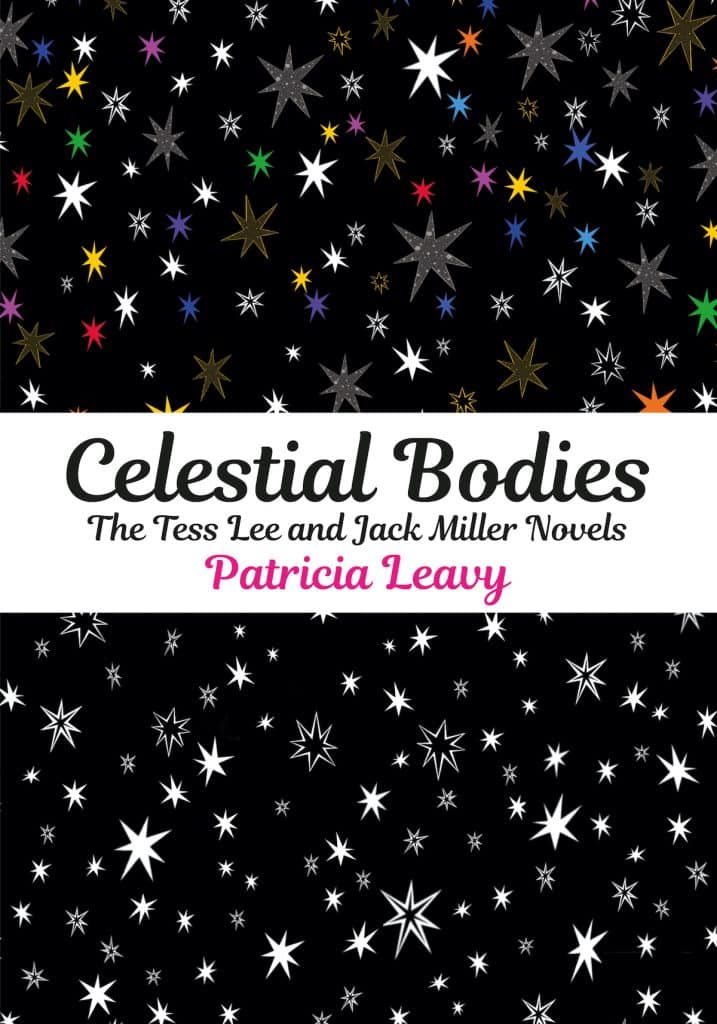Although I never planned it, I wrote a series of novels, Celestial Bodies, that have pierced my heart in a way nothing else ever has, changing me as a writer and as a person. Let me give you the back cover synopsis and then I’ll explain how I wrote this collection, what it means to me, and what it taught me about the power of fiction.
I originally conceived of these novels as a love letter to love. Some have called them a modern fairy tale, and others have even called them a prayer. That’s how I’ve come to think of them—as a prayer for all those with scars, both visible and invisible.
THE NOVEL
Celestial Bodies is a series of six novels that follow the epic romance of Tess and Jack: Shooting Stars, Twinkle, Constellations, Supernova, North Star, and Stardust. An exploration of the power of love, each novel focuses on love at the intersection of another topic: healing, doubt, intimacy, trust, commitment, and faith. While external threats occur in each book, this is ultimately a story about internal threats—the audio playing in our own heads.
Celestial Bodies: The Tess Lee and Jack Miller Novels
Tess Lee is a world-famous novelist. Her inspirational books explore people’s innermost struggles and the human need to believe that there is light at the end of the tunnel. Despite her extraordinary success, she’s been unable to find happiness in her personal life.
Jack Miller is a federal agent who specializes in counterterrorism. After spending decades immersed in a violent world, a residue remains. He’s dedicated everything to his job, leaving nothing for himself. The night Tess and Jack meet, their connection is palpable. She examines the scars on his body and says, “I’ve never seen anyone whose outsides match my insides.”
The two embark on a beautiful love story that asks the questions: What happens when people truly see each other? Can unconditional love change the way we see ourselves? Their friends are along for the ride: Omar, Tess’s sarcastic best friend who calls her Butterfly; Joe, Jack’s friend from the Bureau who understands the sacrifices he’s made; and Bobby and Gina, Jack’s younger friends who never fail to lighten the mood.
LEARNING TO LIVE IN COLOR
Along the way, others join their journey: the female president of the United States, with whom Tess bakes cookies and talks politics; the Millers, Jack’s childhood family; and many others. Celestial Bodies is about walking through our past traumas, moving from darkness to light, learning to live in color, and the ways in which love—from lovers, friends, or the art we experience—can heal us.
For me, as a writer, this series of novels was the gift of a lifetime; never have I experienced more joy or learned as much from my characters. Entering this story-world day after day felt like being embraced in the warmest of hugs. The creative process was unlike anything I had experienced before or could have planned. It was magical.

Read The AutoEthnographer’s Interview with
Award-Winning Author Patricia Leavy on Literary Research
ORIGINS
One evening, I was standing on my balcony, looking up at the sky, when Shooting Stars came to me in a burst—every character, every moment, the complete story. I wrote the first draft in only ten days. I barely slept, I didn’t respond to emails, and if anyone spoke to me, I’m sure I didn’t hear a word they said. I was completely immersed in the story-world.
Differing from my previous work, I wrote the novel out of order as a series of scenes, which I later strung together. The last scene was written first, and the first scene was written last. I avoided literary devices I had used in the past, such as interiority and flashbacks, opting instead to write the entire novel in real time, through dialogue and interaction, so readers could experience the characters as they experience each other.
The writing process was joyful, cathartic, emotional, and wholly immersive. The resulting book held my hand in a way nothing else ever had. I loved these characters. Shooting Stars was tremendously special to me. When it was complete, the loss was so significant that it devastated me. Two days later, Twinkle came to me in another burst. Finally, I understood I was writing a series.
HOW DO WE DO LOVE?
The Tess Lee and Jack Miller Novels are a love letter to love. It all began with a single idea. There’s a saying that, “Hurt people hurt people,” but that’s not always the case. Sometimes, even people in deep pain are able to love others in extraordinary ways without widening the circle of trauma. That’s what the relationships in this collection illustrate. How do we “do” love? What does love look like in action? Can we truly see one another? Can giving and accepting unconditional love change the way we see ourselves?
Each novel in the series explores love and another topic—healing, doubt, intimacy, trust, commitment, and faith. Though dangers arise, such as Tess’s stalker in Twinkle, this series is not about facing external threats. It’s about internal threats, the audio playing in our own minds. Themes of darkness and light and the relationship of the small part to the greater whole continually reemerge across the books. While each novel centers on a contained narrative, there is an overall arc over the seven years we follow these characters as they learn to balance darkness and light, live in color, and accept that we shall ultimately return to stardust.
LOVE STORIES
Love stories often focus exclusively on romantic love, but I wanted to explore love in all its forms and textures, with all its complexity: between lovers, friends, childhood families, and chosen families; love of country; and the love embodied in art. I also wanted to challenge the assumption that romantic love is the ultimate form of love. The soul mate relationship between Tess and Omar is as deep and meaningful as the romantic love between Tess and Jack.
Their larger group of friends and relatives is also of central importance. While toxic characters may lurk in the background, this is a story about good people who are trying to do good in the world. In many ways, these characters are aspirational. They are models of what compassion can look and feel like. One reader told me, “I’m not sure if I know any people who are this kind.” My question was: “Are you this kind?” These characters offer a roadmap. None of them are without pain, or indeed, even tragedy, and they each make mistakes, yet they see the humanity in others and treat each other with a gentleness I can only describe as grace. In doing so, they overcome their own demons.
HEALING MOMENTS
The series includes what I think of as “healing moments.” Perhaps this became my biggest goal when putting this story out into the world. Characters experience healing from childhood abuse, grief, shame, and the loss of their childhood families simply for being who they are. These were always tough moments to write, as the characters had to go through their pain to get to the other side, but they were also some of the most rewarding scenes.
I know not everyone gets the healing moments they long for which is why they became so important to me in the series. Through the characters, we can experience the healing moments we long for but may not get in our own lives. I hope these moments resonate with readers to help soothe their jagged wounds. At the end of Shooting Stars, Tess says that love heals, but when we don’t have people to provide that love, it can come from a song, a movie, or even a novel. That is why I wrote these books. I hope the love on these pages lives inside of readers.
ROMANTIC LITERARY FICTION
For a collection of novels that deals explicitly with challenging topics, there’s a lot of laughter and joy too. Some have even called these novels rom coms, although I see them more as romantic literary fiction. I understand why some readers feel this way— there’s lots of banter among close friends, hilarious storytelling, light-hearted mockery, tropical vacations, cozy holidays, and celebrities who walk, or stumble, across the pages. When I was writing each book and the series as a whole, I tried to balance melancholic and challenging topics with bits of humor and joy. In this regard, the writing is meant to mirror the underlying theme: balancing darkness and light in our lives.
A LOVE LETTER TO LOVE
It’s impossible to capture all that this collection means to me. I’ve published over forty books, but these are what I’m most proud of, what I’ve reread, what I’m grateful to put out into the world. If someone has never read my work, I hope they begin with this collection. I originally conceived of these novels as a love letter to love. Some have called them a modern fairy tale, and others have even called them a prayer. That’s how I’ve come to think of them—as a prayer for all those with scars, both visible and invisible.
What do I hope readers will get from this series? Comfort, joy, escape, healing, connection, compassion, and perhaps even inspiration to live and love fully, come what may. In the end, one of the lessons I learned from Tess is: Breathe. Just breathe.
Author’s Note: This piece was adapted from the afterword to Celestial Bodies.
Website: www.patricialeavy.com
Facebook: https://www.facebook.com/WomenWhoWrite/
Instagram: https://www.instagram.com/patricialeavy
Celestial Bodies on Amazon: https://amzn.to/3uSxgOP











